April 05, 2013
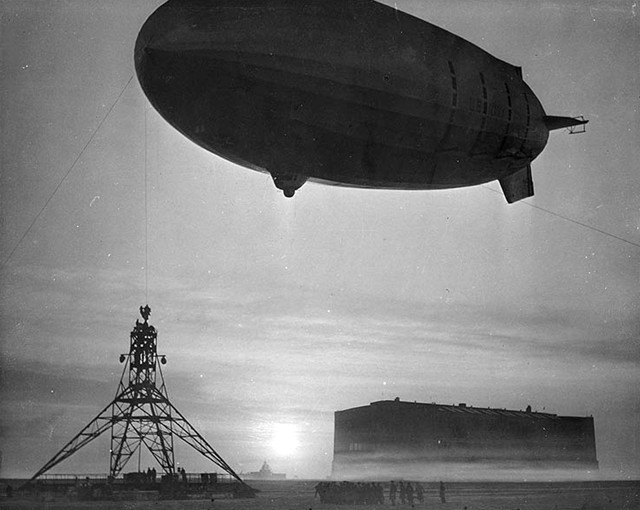
The USS Akron (ZRS-4) and her sister ship, the USS Macon (ZRS-5) were two of the largest things ever to fly, and the largest helium-filled airships ever at 785 feet long. Only the Hindenburg was longer, and only by 20 feet. Despite that immense size, they only weighed 110 tons and could make 72kts at maximum speed. Their role with the US Navy was to be that of reconnaissance. With a range of 12000 miles, more or less, crossed with their speed, they could easily scout ahead of the fleet. However, it was recognized that something that size was hardly invisible and made for one juicy target, even if their helium gasbags meant that they wouldn't go foom the way zeppelins did in WWI. Enter the Sparrowhawk.
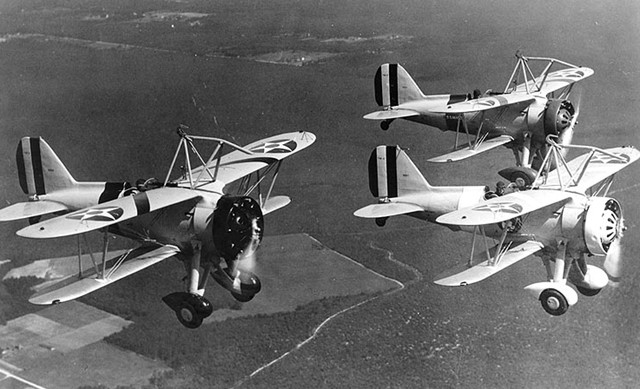
Both the Akron and Macon could carry up to five F9C Sparrowhawk fighters, though four was the norm. These were carried inside the dirigibles, and were launched and recovered via a "trapeze" unit. Simply put, the hook on the top wing would engage the trapeze, which then hauled the plane up into the hangar. To launch, they were lowered via the trapeze, then the hook would be disengaged. The Sparrowhawk would then fall away, in yet another example of why pilots are insane.
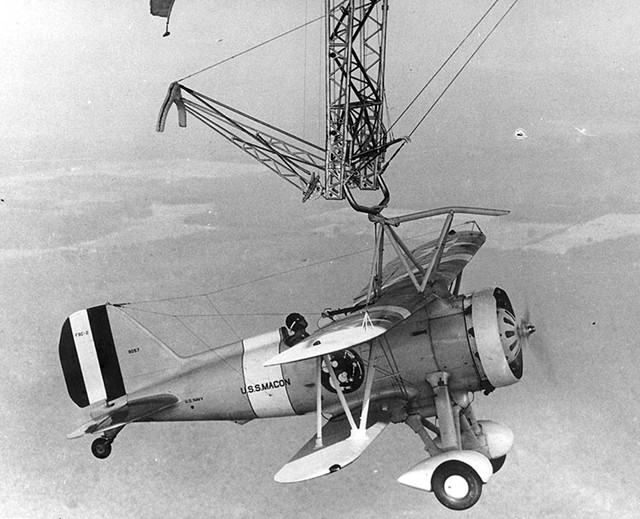
The Sparrowhawks were not carried for local defense, though they could certainly perform in that role. Instead, they were to increase the scouting area of the mothership, and allow the Akron and Macon to stay a safe distance from the targets. On the whole, there's no reason why this wouldn't have worked, and test results were generally favorable. There was no terrible difficulty with the trapeze unit, other than the sheer ridiculousness of the concept.
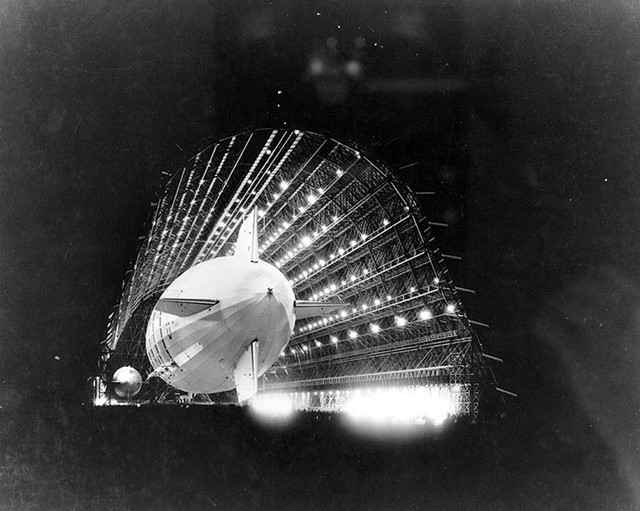
Unfortunately, neither the Akron or the Macon had long careers in the Navy. Dirigibles are, as you can imagine, inherently somewhat fragile. On April 4th, 1933, a mere two years after her launching, Akron was lost when she flew into a storm front over the Atlantic. 73 of her crew of 76 were lost. Two years later, the Macon was struck by a severe gust of wind that carried away her upper tailfin (weakened by a previous accident and insufficiently repaired). She settled gently into the Pacific Ocean, and 74 of her crew survived.
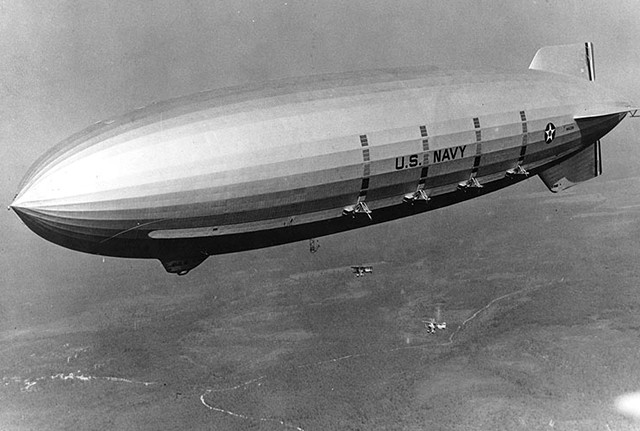
But for a while, they were flying aircraft carriers.
Posted by: Wonderduck at
10:17 PM
| Comments (7)
| Add Comment
Post contains 438 words, total size 3 kb.
Posted by: Steven Den Beste at April 06, 2013 10:14 AM (+rSRq)
Oh, airships! I have always had a soft spot in my heart for them, even though they were incredibly fragile and vulnerable, with limited utility. The classic photo of USS LOS ANGELES standing near vertical from the top of the mooring tower is still one of the most memorable photographs ever taken.
Blimps (smaller than these two) had active service in WWII acting as convoy escorts during the Battle of the Atlantic and were pretty successful.
Blimps in WW2 also produced the famous 'blimp that came without its crew' incident. At least one blimp was shot-down in a fight with a U-Boat as well.
Posted by: cxt217 at April 06, 2013 05:36 PM (6/RCS)
L-8's crew was abducted by aliens. (I don't know how that could have been avoided).
The blimps did a superb job and were considered 1st rate ASW platforms until the early 60's when McNamara decided they were too old fashioned. As ASW platforms or AEW they still have considerable potental.
Posted by: Brickmuppet at April 06, 2013 10:17 PM (9jITs)
Posted by: Mitch H. at April 08, 2013 08:25 AM (jwKxK)
Airships were mooted for ASW use towards the end of the Cold War, but the fall of the Berlin Wall and the disappearance of the Soviet Union put an end to those discussions.
IIRC Aerostats were used for anti-drug smuggling interdiction, though I seriously doubt they can truly replace an AEW aircraft for most purposes - and certainly not AWACS.
Posted by: cxt217 at April 08, 2013 07:45 PM (aDysA)
Posted by: Bill Anderson at April 10, 2013 06:58 PM (eREoE)
ISIS blimp sounds like a DARPA idea, but there has been no new updates in about a year, and the official DARPA site on the project does not say much. So it is alive, but no much beyond that.
This may be one of the 'pie in the sky' - pun unintended - that is less interested in coming up with the intended system but more in proofing concepts that can be applied to other applications and developing other ideas that spring from it.
Posted by: cxt217 at April 11, 2013 04:26 PM (dv0V3)
47 queries taking 0.3931 seconds, 283 records returned.
Powered by Minx 1.1.6c-pink.









